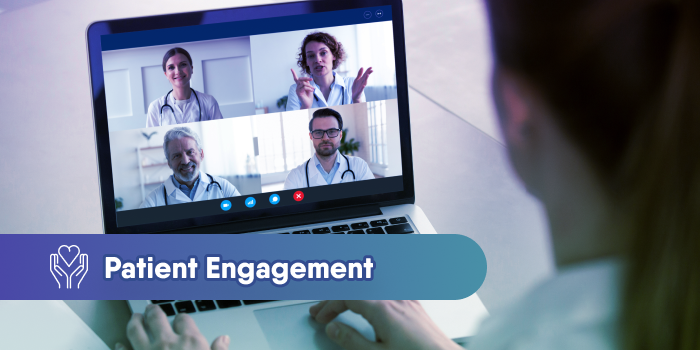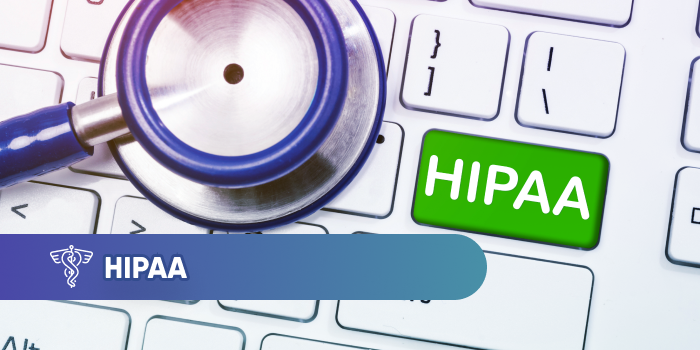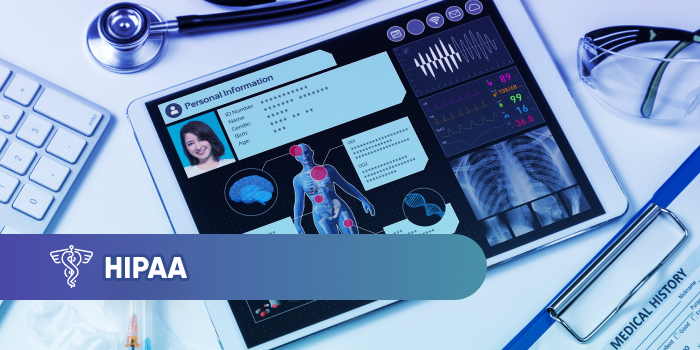What Makes Communication Technology HIPAA Compliant
Communication technology certainly makes day-to-day medical practices more efficient. Healthcare professionals use devices, such as smartphones and...
5 min read
 Carylee Gali
:
4/15/22 7:00 AM
Carylee Gali
:
4/15/22 7:00 AM

Patient engagement and HIPAA compliance are key elements to cultivate trust and security among healthcare providers and patients. Find out how you can engage patients and be HIPAA-compliant using telemedicine from Curogram.
Healthcare providers are investing in digital health technologies like telemedicine to stay afloat in the know on innovative trends that enhance patient engagement. Engaged patients greatly contribute to improved health outcomes and a medical organization’s credibility. But aside from cultivating trust between healthcare providers and patients through patient engagement technology, protecting patient information is crucial — and HIPAA compliance does the job of securing private health data.
Patient engagement and HIPAA compliance are broad elements in healthcare, but we’ve compiled the fundamental things you need to know about their significance.
For healthcare providers, patient engagement is a high priority. It is an essential indicator of quality care and services that correlates with positive business outcomes.
Medical practices must do their best to involve patients in the decision-making process of their medical journey. Patient engagement is a hands-on approach where patients (and their caregivers, when applicable) better understand treatment options, medications, recovery processes, and other aspects of health management, including insurance coverage.
However, there is no guarantee of the success of patient engagement with just the effort from healthcare providers. They can come up with the best strategies to promote and enhance patient engagement, but ultimately, it is the patient’s decision if they are going to be proactively involved in their care and stay with their physician for a long time.
Since patient engagement is a vital component to the success of health outcomes and medical practices, it is only essential to understand its implication among healthcare providers and patients.
Patient engagement is beneficial to both healthcare providers and patients. Given the right engagement approach, patients take a more active role, leading to health progress and satisfaction with their healthcare provider.
There are two important reasons why enhancing patient engagement is crucial in medical practice.
First, patients know they have the option to switch from one physician to another. Not being able to connect well with them could significantly influence their decision to leave your practice, affecting your organization’s revenue.
Second, an established connection with a patient results in a positive experience that makes them stay and even recommend you to their family or friends.
Meanwhile, patient engagement is valuable in two important ways to patients.
First, understanding the importance of patient engagement leads to improved health outcomes and overall well-being.
Second, taking an interest in their care urges patients to monitor their health and report any signs of potential illnesses, thus giving your practice a good chance of treating the problem before it turns into something more severe or chronic, or an exacerbation of a chronic condition, so you can address it quickly.
Patient engagement can make or break a medical practice if not done properly. On the other hand, passive patients (those who are not actively engaged in the consultation or their care plan) are more prone to rehospitalization and recurring illnesses.
No matter how healthcare providers effectively implement strategies that enhance patient management, there are always barriers that negatively impact patient engagement in the delivery of care.
These may include patient-related barriers such as:
By learning about these barriers, healthcare providers may form new strategies in dealing with patients to improve and promote patient engagement.
Healthcare providers use technology such as software and apps to streamline services that optimize patient communication and engagement.
It is critical to adapt to innovations and integrate the right tools into your practice to keep your patients well-connected.
Patient engagement technology may include:
The patient portal is a secured system where patients can schedule appointments, communicate with physicians, or check medical records. That increases patient engagement by providing a digital entryway to communicate outside appointments.
Home monitoring devices with standard medical features such as sensors, central data storage, and functionality that facilitates the electronic sharing of patient data. It motivates patients to communicate efficiently with their physicians.
Remote healthcare delivery is becoming more popular. Telemedicine revolutionizes healthcare, allowing patients to gain access to care even in the comfort of their homes with virtual visits.
The way patients perceive healthcare is transforming with the advent of digital health. Patients no longer prefer just to get treatment; they opt to have more personalized and meaningful medical experiences, virtually.
Technology plays a significant role in helping patients become more engaged with their care. However, with the integration of digital communications or telemedicine, healthcare providers must also consider the safety of their patient’s medical information.
When it comes to medical information, security is crucial. However, healthcare data breaches are rising due to the uptrend of digital health, where healthcare providers share patient information over various unsecured communication channels.
According to the HIPAA Journal, 3,705 healthcare data breaches happened from 2009 to 2020, resulting in the loss, theft, exposure, or impermissible disclosure of 268,189,693 healthcare records. The healthcare data breach statistics identified hacking and unauthorized access or disclosure incidents as the leading causes of healthcare breaches.
Therefore, to guarantee that the privacy and security of health information are protected, the Health Insurance Portability and Accountability Act (HIPAA) exists.
Here are the essential elements of HIPAA that you should know:
HIPAA may include numerous rules and regulations that command healthcare providers to manage and disclose medical data properly, but its purpose is simple and can easily be understood.
The main goals of HIPAA include:
In general, HIPAA protects sensitive patient medical data from falling into the wrong hands. When private medical information gets unknowingly exposed, there are consequences, such as:
HIPAA compliance guarantees that only authorized users can access sensitive medical records. Moreover, a HIPAA-compliant communication platform allows organizations to develop a level of data security and accuracy that improves patient satisfaction and outcomes.
The HIPAA policy protects patient medical data while allowing covered entities to adopt new technologies to deliver quality and efficient patient care.
The following types of individuals and organizations fall under the covered entities of HIPAA:
An entity must follow all of the regulatory rules to be considered HIPAA-compliant. HIPAA mandates that they do the following:
While the HIPAA policy protects private health information, it is the covered entity’s duty to make sure that the data stays secure.
HIPAA violations range from using unsecured communication channels to unintentional staff mistakes leading to healthcare data breaches.
Violating HIPAA can cost a covered entity between $100 and $50,000 per violation or face civil or criminal penalties. With state-specific breach notifications, an organization needs to let people know if a healthcare data breach involves PHI of 500 patients or more.
Not only that, a violation can cause irreparable damage to an organization’s reputation, leading to patients’ mistrust and disfavor.
However, an organization can prevent these violations by implementing HIPAA-compliant systems such as Curogram, a telemedicine solution that fully complies with the HIPAA rules for data protection.
It is essential to understand that while advocating for patients to be more involved in their care using tech-driven tools and strategies, healthcare providers must also protect their patients’ privacy and health information.
Patients should know that involvement in the decision-making process of their healthcare management is possible and welcomed; at the same time, they should also know about HIPAA. Learning about HIPAA compliance regulations can help patients better understand their rights in medical data privacy.
With HIPAA-compliant communication technology like Curogram, physicians can securely communicate and share patients’ medical data, leading to a comprehensive satisfaction of care and patient engagement.
Furthermore, patients feel more relaxed, trusting, and motivated to carry out patient engagement knowing that their medical records and information are in your organization’s secured and HIPAA-compliant platform.

Communication technology certainly makes day-to-day medical practices more efficient. Healthcare professionals use devices, such as smartphones and...

Telemedicine solutions are in high demand as patients want more convenient ways to communicate with their healthcare providers. Secure two-way...

It is crucial to share and make accessible a patient’s medical record and protected health information with the right people. It is equally essential...